- Play & Activities
- Life Skills
- Learning & Education
- Play & Learning

- Growth & Development
- Rhymes & Songs
- Preschool Locator

Human Body Parts – GK Questions & Answers For Class 1!
GK Questions On Parts of Body With Answers For Class-1
Children are curious by nature. As they grow, they have questions about almost everything – their surroundings, the world in general, and especially their bodies. Children should know the body parts, their names in English, and their functions or uses. For Class-1 students, relating body parts with the activities they do can be an interesting exercise. It helps with academic development as well as awareness about their bodies. We’ve covered this topic for your little one to learn and identify body parts through a fun questionnaire given below. Be sure you read till the end.
The human body is important, but we must mention here that one’s mind is also a significant aspect. Both the body and the mind go hand in hand when it comes to how important each one is. Learning parts of the body for Grade-1 is fundamental because it will help your child know about their body better. Combine this knowledge with pictures, and you’ll see how quickly your little one understands the body parts better. It will make them love their body and will help them to grow into adults who want to keep their bodies safe, healthy, and strong so that they can continue doing all their favourite activities even after they have grown big.
Our body works nonstop, like a clock, and is the greatest example of nature’s miracle. It is an incredible machine, and it’s amazing how efficiently it works. The fact that we breathe about twenty-three thousand times through our noses in a day is so interesting! The fastest muscle in the human body is the muscle that controls blinking, and women blink more than men. The brain is the most important organ in the human body. While the heart and other organs of the body are also very important, the brain coordinates all the functioning that the other organs carry out. It will also be very interesting for your little one to note that a human body has a close resemblance to chimpanzees. We have listed a set of questions revolving around human body parts for Class-1, and there are options from which your little one can choose the correct answer. It will give your child a better understanding of their body parts.
Let’s get started!
Q1. This is the picture of …………….. ?
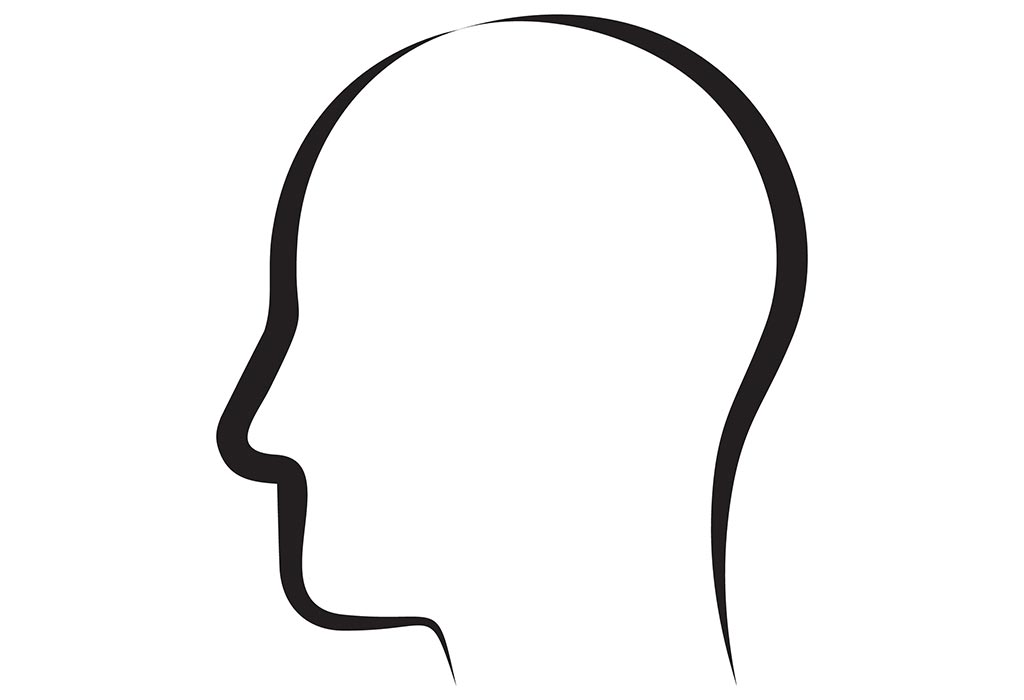
a) Elbow b) Eyes c) Feet d) Head
Q2. We see with our ……….. ?
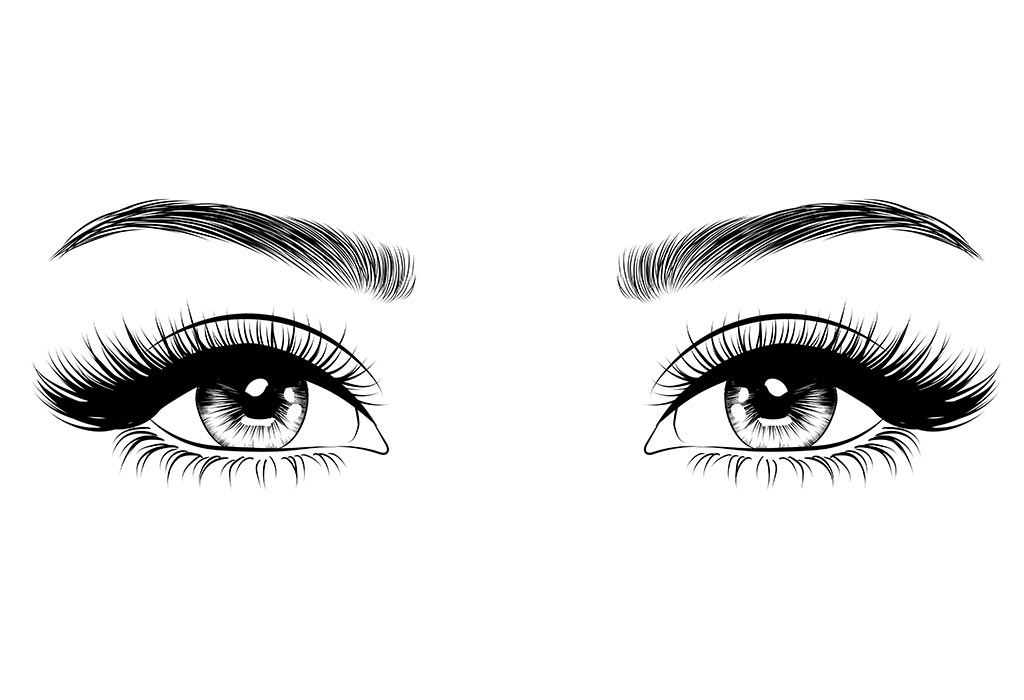
a) Elbows b) Eyes c) Feet d) Head
Q3. The …………… helps us smell different fragrances!

a) Eyes b) Feet c) Hand d) Nose
Q4. We can hear sounds with the help of our …………. ?
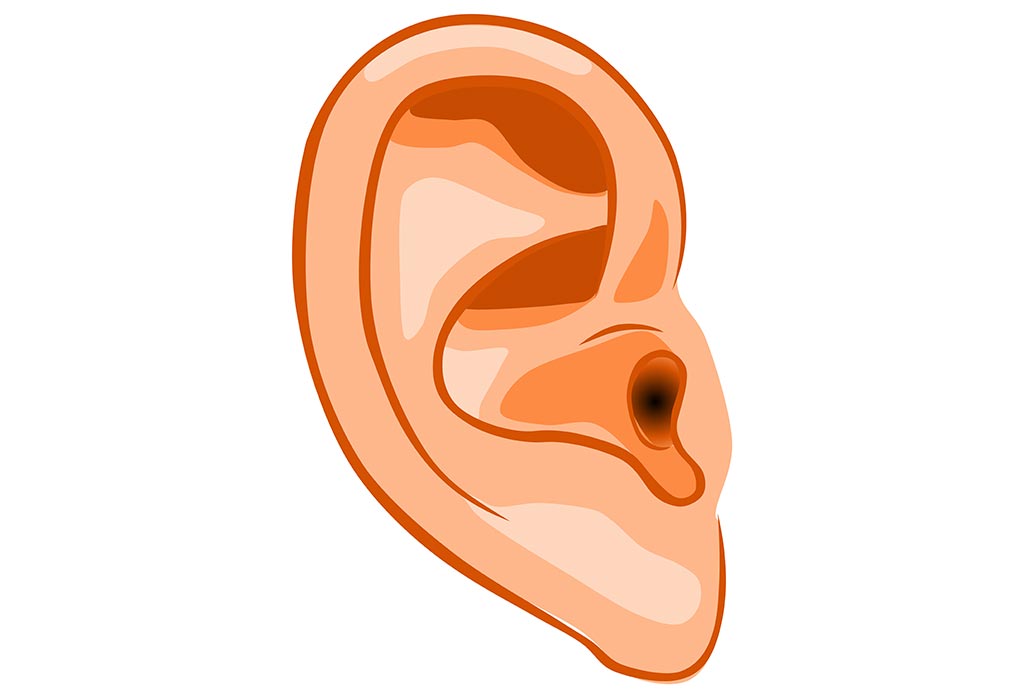
a) Ears b) Eyes c) Feet d) Hand
Q5. We chew our food with our ………. ?
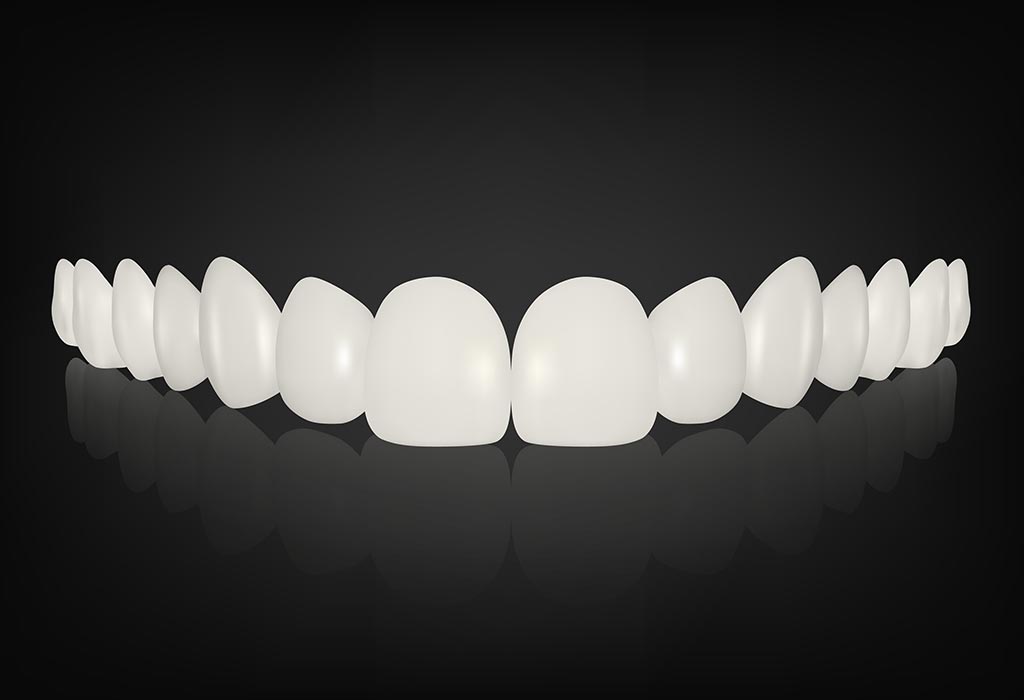
a) Ears b) Eyes c) Nose d) Teeth
Q6. We turn our heads with the help of our ….. ?

a) Eyes b) Neck c) Nose d) Feet
Q7. We smile by stretching our ……… ?

a) Ears b) Lips c) Teeth d) Tongue
Q8. When we eat something, we put our food into our …….. ?

a) Hand b) Mouth c) Tongue d) Teeth
Q9. After eating food, it travels down and reaches our …… ?

a) Mouth b) Stomach c) Tongue d) Teeth
Q10. We walk or run with the help of our ……. ?

a) Legs b) Hands c) Head d) Mouth
Q11. We hug someone with our …… ?
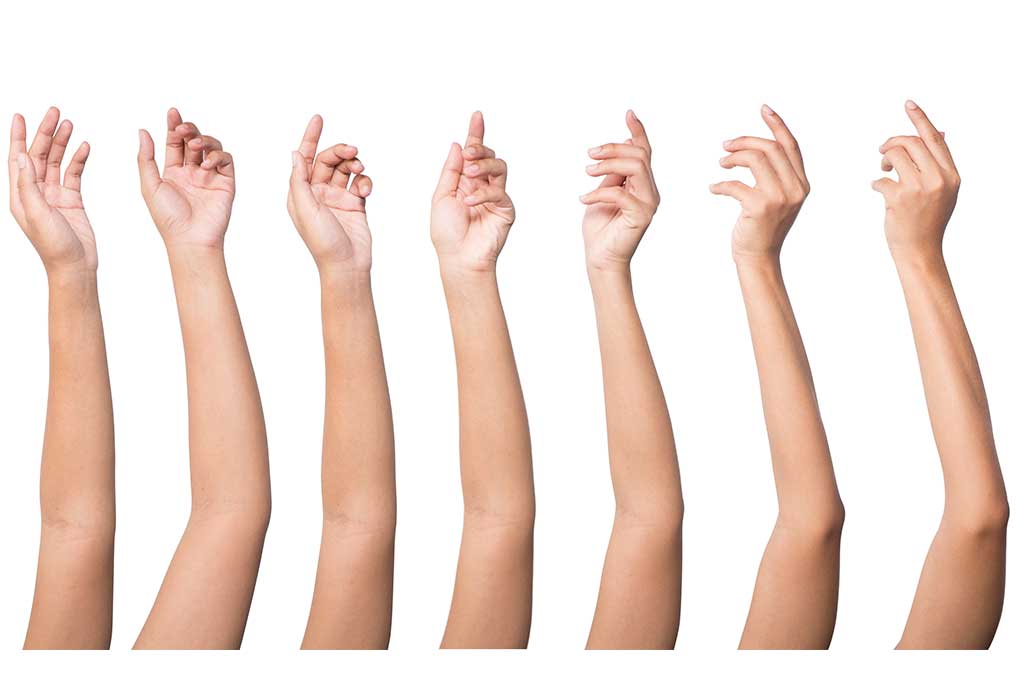
a) Arms b) Head c) Stomach d) Tongue
Q12. We jump and land on our …………… ?

a) Arms b) Feet c) Hands d) Head
Q13. We hold something with the help of our ………. ?

a) Hands b) Head c) Mouth d) Teeth
Q14. A human body has …….. hands.

a) Five b) Four c) Three d) Two
Q15. Both our hands have …….. fingers.

a) Five b) Four c) Ten d) Three
Q16. A human body has ……… eyebrows.
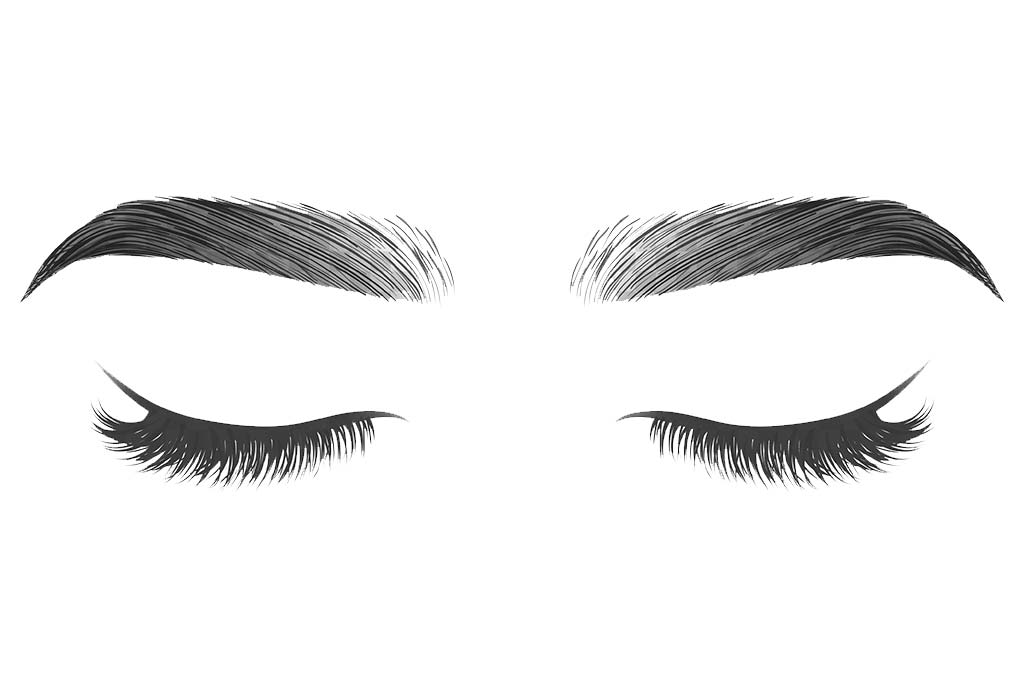
Q17. The majority of Indians have ……… coloured hair.

a) Black b) Brown c) Golden d) Red
Q18. A human body has ……. legs.
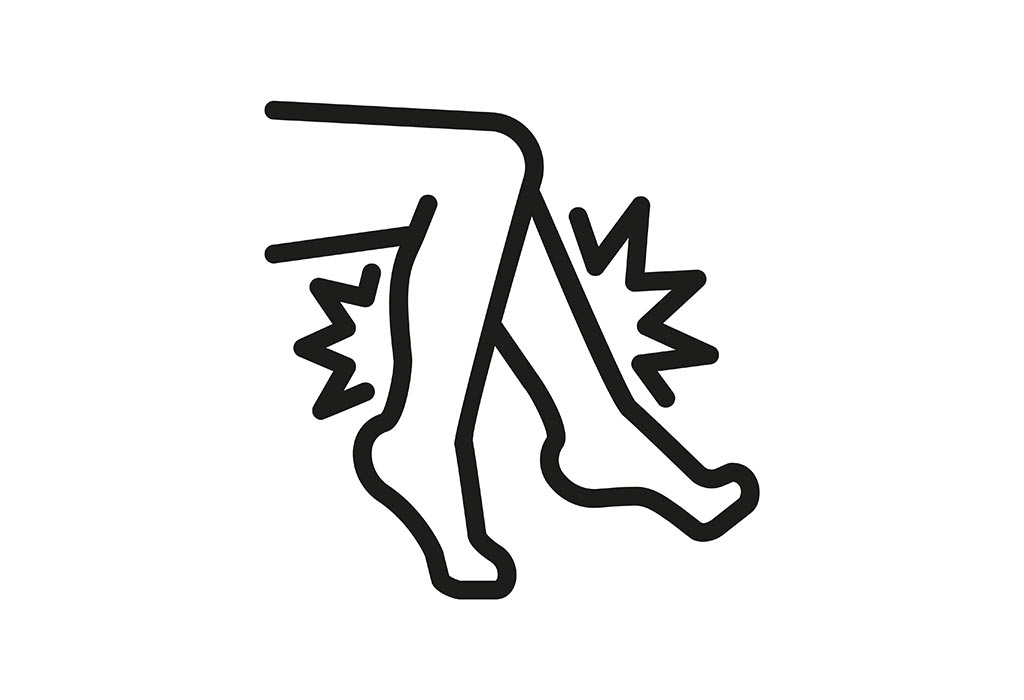
a) Four b) One c) Three d) Two
Q19. Both our feet have ……. toes.

Q20. We wear watches on our …….. .

a) Ears b) Eyes c) Feet d) Wrists
Q21. How many sense organs does a human body have?

a) One b) Five c) Four d) Six
Q22. Which is the largest sense organ in the human body?

a) Ears b) Eyes c) Nose d) Skin
Q23. Which is the hardest part of the human body?

a) Ears b) Nose c) Skin d) Teeth
Q24. How many teeth does a child have?

a) 20 b) 22 c) 24 d) 26
Q25. How many teeth does an adult have?
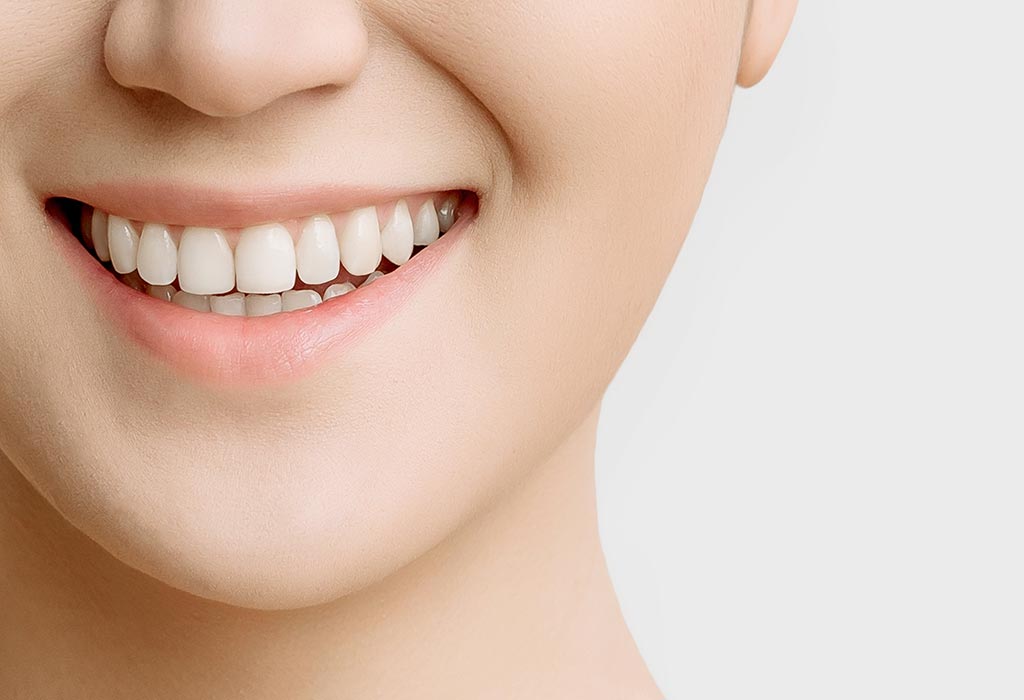
a) 29 b) 30 c) 31 d) 32
Below are the answers to the questions above.
The human body comprises different parts – the head, the trunk, and our upper and lower limbs. It is important to care for the human body by eating well and exercising to stay healthy. We hope the quiz will serve as an interesting way for your child to learn about the different parts of the human body.
- GK Questions for Class 1
5 Recommended Books To Add To Your Child’s Reading List and Why
5 absolute must-watch movies and shows for kids, 15 indoor toys that have multiple uses and benefits, leave a reply cancel reply.
Log in to leave a comment

Most Popular
The best toys for newborns according to developmental paediatricians, the best toys for three-month-old baby brain development, recent comments.

FirstCry Intelli Education is an Early Learning brand, with products and services designed by educators with decades of experience, to equip children with skills that will help them succeed in the world of tomorrow.

Story Related Activities Designed to Bring the Story to Life and Create Fun Memories.

Online Preschool is the Only Way Your Child's Learning Can Continue This Year, Don't Wait Any Longer - Get Started!
©2021 All rights reserved
- Privacy Policy
- Terms of Use

Welcome to the world of Intelli!
We have some FREE Activity E-books waiting for you. Fill in your details below so we can send you tailor- made activities for you and your little one.

Welcome to the world of intelli!
FREE guides and worksheets coming your way on whatsapp. Subscribe Below !!
THANK YOU!!!
Here are your free guides and worksheets.
6 Pages Printable My Body Worksheet for Class 1: A Comprehensive Guide
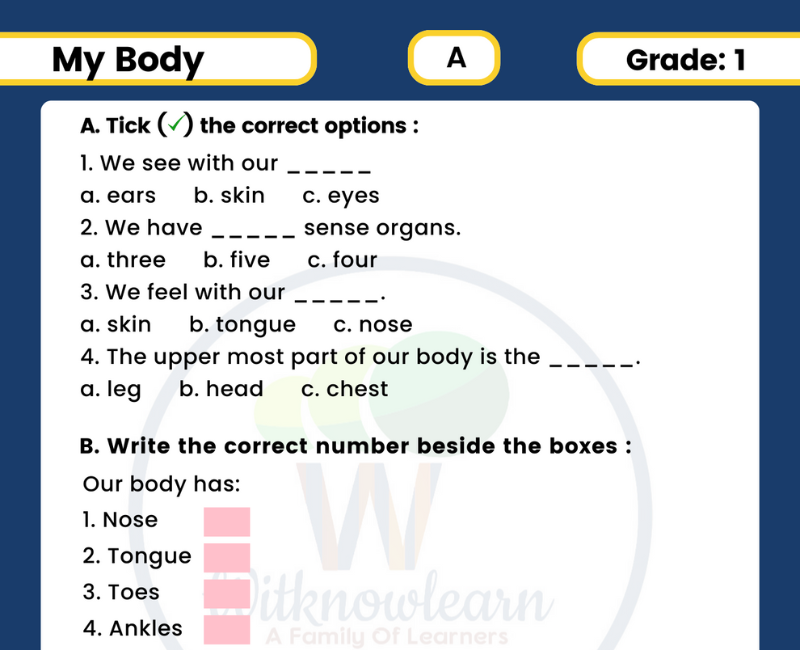
- Download file
Teaching young students about the human body can be a fun and engaging experience. This printable worksheet pack is designed for class 1 students and includes a variety of activities to help them learn about different parts of the body, their functions, and how to keep them healthy. With an answer key included, this resource is perfect for teachers looking for a comprehensive guide to teaching about the human body.
Introduction to the Human Body.
One of the key activities in this worksheet pack is labeling the different parts of the body. Students will learn about the major organs and body parts, such as the heart, lungs, brain, and stomach, as well as the different systems that make up the body, such as the digestive, respiratory, and circulatory systems. By labeling these parts and systems, students will gain a better understanding of how the body works and how different parts are interconnected.
Match the following body parts
In this worksheet pack, students will have the opportunity to match different body parts to their corresponding names. This activity will help them to learn the names of different body parts and their functions. It will also help them to develop their fine motor skills as they cut out the different body parts and match them to the correct names. This activity is a fun and interactive way to teach students about the human body and its different parts.
Questions and answer on body parts for class 1
This printable worksheet pack includes questions and answers on body parts for class 1 students. Students will be asked to identify different body parts and their functions, as well as match them to their corresponding names. The answer key is included to make grading and checking answers easy for teachers. This activity is a great way to reinforce learning about the human body and its different parts in a fun and engaging way.
Introducing "My Body Class 1," an all-encompassing educational resource designed to help young learners understand their bodies and develop a strong foundation in the subject. This resource provides an extensive collection of my body worksheets, lesson plans, and activities catering to Class 1 students, which are essential components of the Class 1 EVS (Environmental Studies) curriculum. The My Body EVS Class 1 questions and answers cover various aspects of the human body, allowing students to gain a comprehensive understanding of their physical selves.
In the My Body EVS Class 1 PDF, students will explore various body parts and their functions. Parts of my body worksheet focuses on identifying and labeling body parts, while the part of my body worksheet and my body parts worksheet delve deeper into the understanding of each body part's function. The My Body EVS Class 1 worksheet is an excellent tool for reinforcing the learning process.
The body parts name for Class 1 and Class 2 are designed to help young learners identify and name the different parts of their bodies. With the worksheet on my body for Class 2, students can further enhance their knowledge of the human body. Similarly, the My Body worksheet for Class 1 ensures that students have a solid understanding of the subject matter.
Diving into Class 1 EVS Chapter 1 My Body and Class 1 EVS Chapter 2 My Body, students will discover the wonders of their bodies through engaging content and interactive activities. The My Body essay for Class 1 encourages students to express their understanding of their bodies creatively. The body parts name for Class 2, along with the worksheet on my body for Class 1, further reinforces the subject matter and provides ample practice.
The My Body lesson plan, including the My Body Lesson Plan PDF, offers educators and parents a structured approach to teaching the subject. This ensures that students have a comprehensive understanding of the topic, which is crucial in their early developmental years. My Body parts worksheet for Class 1 and the My Wonderful Body worksheet offer additional opportunities for students to explore their bodies in a fun and engaging manner.
Engaging in activities on my body for Class 1 and parts of the body Class 1 helps students develop a strong connection with their bodies. The Class 1 body parts name and Class 1 body parts materials aid students in understanding the importance of each part of their body. Questions on my body for Class 1 encourage critical thinking, ensuring that students have a deep understanding of the topic.
As part of the Class 1 syllabus EVS, the My Body unit provides a comprehensive overview of the human body. The essay on my body for Class 1 encourages students to reflect on their bodies and the various functions each part plays. This, in turn, helps them appreciate the importance of maintaining a healthy body.
In conclusion, "My Body Class 1" is a must-have resource for young learners to build a strong foundation in understanding their bodies. It offers a wide range of materials, including my body worksheets, lesson plans, and activities, that cater to the specific needs of Class 1 students. This invaluable resource not only enhances their knowledge but also instills a sense of curiosity, encouraging them to ask the question, "Why my body?" as they explore the fascinating world of the human body.
- My body evs class 1
- All CBSE worksheet
- All EVS worksheet
- All GRADE 1 worksheet
You may like these also

Comparing Size Worksheets for Nursery: Same or Different?

7 Pages Profit and Loss Worksheets for Class 5 with Answer Key

Best Measurement Worksheet for Class 5th with Answer Key

7 Engaging Fun with Numbers Class 3 Worksheets for Math Practice
Teaching resources, test generator, worksheet generator, elearning for students, practice question paper, mock test series, happy parenting, elearning for child, worksheet for child, mock test series for child, witknowlearn, privacy policy, terms and condition, refund/cancellation policy.

Or login with Google
Notification
Upgrade to better learning opportunities.
Use Promo Code: SAVE70 for 70% OFF! Join Now

- Lesson Plan Examples
- Parts Of The Body
Parts Of The Body Lesson Plan for 1st Grade Students
Topic: parts of the body, objectives & outcomes.
- Students will be able to name and correctly identify all the parts of the body.
- Picture cards with pictures of the different parts of the body (e.g. head, arms, legs, torso, etc.)
- Chart paper and markers
- Have students stand up and stretch their bodies, pointing to each part of their body as they say its name (e.g. "My name is Arm, and I am an arm!")
- Ask students to sit down and draw a picture of their body, including all the parts they can think of.
Direct Instruction
- Show the students the picture of the body and ask them to point out the different parts.
- Label each part as you go along, using the pictures and words printed on the handouts.
- Ask students to repeat the names of the body parts after you.
Guided Practice
- Distribute the handouts to the students and ask them to work with a partner to identify the different body parts.
- Have them use the pictures as a reference.
- Have them use the words printed on the handouts to help them identify the parts.
- Have them use the words they have learned so far to help them identify the parts.
- Have them use their fingers to trace the lines of the body part drawings.
Independent Practice
- Have the students work in groups to create a picture book about the body.
- Have each group create a story about the different body parts and how they are used.
- Have each group use the body part drawings and the words they have learned to create the illustrations for their book.
- Have each group present their book to the class.
- Review the parts of the body that we learned today.
- Ask the students to give examples of each body part and how they are used.
- Observe the students during independent practice to ensure that they are using the correct body part names when writing their sentences.
- Collect and review the students' class book pages to assess their understanding of the parts of the body.
Create amazing lesson plans 10X faster with AI.
Use AI to instantly generate high-quality lesson plans in seconds
Use AI to instantly generate high-quality lesson plans in seconds.
Get your first year for ONLY $14.70 using code SAVE70 at checkout! 🚀
See it in action! Watch the video!
Talk to our experts
1800-120-456-456
- Kids Learning
Essay for Class 1 Children
Free essay for class 1 kids.
Essay writing fosters a kid's writing skills. Essay writing also encourages young kids to think and put their perceptions in words. Essay writing is not an easy job. Kids and elders find it's hard to think of a topic & put those thoughts into words sometimes.
Creative Essay writing is one of the most effective ways for Kids these days to help them grow overall. Thus, Vedantu is advising parents to encourage their kids to learn how to write Essays On Different Topics. Hence Vedantu has come up with some of the Essays for Class 1 Kids to help parents make their kids learn about writing essays. Parents can explore the huge collection of Essay topics on the Vedantu website which is exclusively designed for Class 1 Children.
Vedantu makes your struggle easy & provides popular & frequently asked essays for class 1 children for free of cost. The purpose of writing an essay is it will engage students inactivity and will motivate them to use their imagination. It is necessary to encourage children to learn Essay Writing Skills which will contribute to their overall personality development at an early age. Explore our huge collection of popular essays exclusively written for class 1 children.
Class 1 Essays
FAQs on Essay for Class 1 Children
1. What is an essay?
An essay denotes a short and formal piece of writing whose focus is on presenting a singular subject of discussion. The word essay is derived from the Latin word ‘exagium’ which denotes to present a case. When you write an essay, you submit a claim on a particular topic by outlining a specific point of view, making an analysis, interpreting facts, or establishing ideas by the use of research evidence.
2. How to encourage children to write a perfect essay?
Following are the five tips that will help your kids to write the perfect essay:
Ask your kids to choose a topic of their interest to write about.
Motivate them to write the ideas that come to their mind.
Teach them to organize their ideas in sentences.
Make them write the essay in their own words.
Lastly, ask them to read out the written easily for you to make corrections.
3. What are the five parts of the essay?
The five parts of the essay are described as under:
Introduction: The first part of the essay should begin with an introduction about the topic which will give an idea about the topic to your reader.
First Body Part: The second part of the essay is known as the first body part which will tell your reader about the essay in detail with examples and related points which will describe your essay.
Second Body Part: In this section, kids will write their thoughts to justify their essay topic.
Third Body Part: This is the final part of the essay which will include a conclusion statement that will make it obvious for the reader to understand that it is going to be a final statement of the essay topic.
Conclusion: Lastly, finish your essay with a conclusion that will help readers to think about the topic and will help them to understand why the kid has chosen to write the essay on the respective topic.
4. How to write an introduction for an Essay?
A good introduction paragraph is an essential part of any academic essay. It sets up your argument and tells the reader what to expect. Following are the points which will help your kids to write an impressive introduction for an essay:
Hook your Reader: Your first sentence sets the tone for the whole essay, so spend some time on writing an effective hook. The hook should lead the reader into your essay, giving a sense of the topic you’re writing about and why it’s interesting. Avoid overly broad claims or plain statements of fact.
Give Background Information: Next, give your reader the context they need to understand your topic and argument.
Present your Essay: It’s time to organize your ideas in the words and sentences which will tell your reader about which topic you have written the essay.
Map your Essay’s Structure: Particularly in longer essays, it’s helpful to end the introduction by pointing out what will be covered in each part.
Check and Revise: When you’ve finished writing the essay body and conclusion, you should return to the introduction and check that it matches the content of the essay.
5. What should be prepared before starting to write an essay?
To start with your preparation for writing an essay. The following points should be kept in mind:
Rough Layout: Jot down all your points related to the topic which comes to your mind.
Explore Research: Provide every material related to the topics to your kids and ask them to read them so that they can get proper writing material for the topic.
Outline the Essay: It’s the final step of writing an essay. Inspire your kids to organize their thoughts and ideas in the sentence.
Conclusion: At the end of the essay add a conclusion so that the reader will get an idea about the end of the essay.
Kids-learning • Class 1
Environmental Scienc ...

Topic outline
Parts of the body.
Parts of the body
Our body is wonderful! We do all activity using our body. Thinking and our reasoning capability make us different from other living creatures of the earth. Our ability to communicate and think makes us human.
Our body has many parts and each one has different name and use. Let’s know the names of our body parts.
My body moves
We use our legs to kick, walk, skip, run, jump etc. We can wiggle our toes and fingers, write with our hands, lift things etc. While doing these things our body parts bends. Bending makes movement possible. All the places that bend in our body are called joints.
Observe your hand; do you see lines on your hand? Try to bend your hand at all the lines you see. What do you observe?
We see that we can bend our entire 4 finger at 3 places, thumb at 2 places. Bending of our fingers, thumb and palm allow us to lift and use many things with our hands. We use our hands to squeeze, hold, pick, touch etc. Our thumb plays great role in doing anything with our hand.
Is it possible for us to hold a scissors or brush without thumb? No, without thumb we cannot use our hands and fingers to move things in a way we want to control.
Download to practice offline.
- Kids Learning
- Class 1 GK Body Parts Questions
GK Questions for Class 1- Body Parts
Students of class 1 are always curious to learn new things. They have lots of questions related to the world, their surroundings and especially their bodies. When students are growing they are excited to recognise that they can walk, sing, listen, play and participate in various other daily activities. At this stage, it’s necessary to teach them about the body parts. In this way, they will become aware of all the actions that are performed through the human body. Thus, they can coordinate their actions with their words. Also, they get to learn words related to the parts of the body.
Here we have provided GK Questions for Class 1 students based on the topic “Human body parts”. They must answer these questions to know how much they have learned about the human body. To download the PDF consisting of all the GK questions on Human Body Parts, click on the link below.
Download GK Questions for Class 1 – Human Body Parts
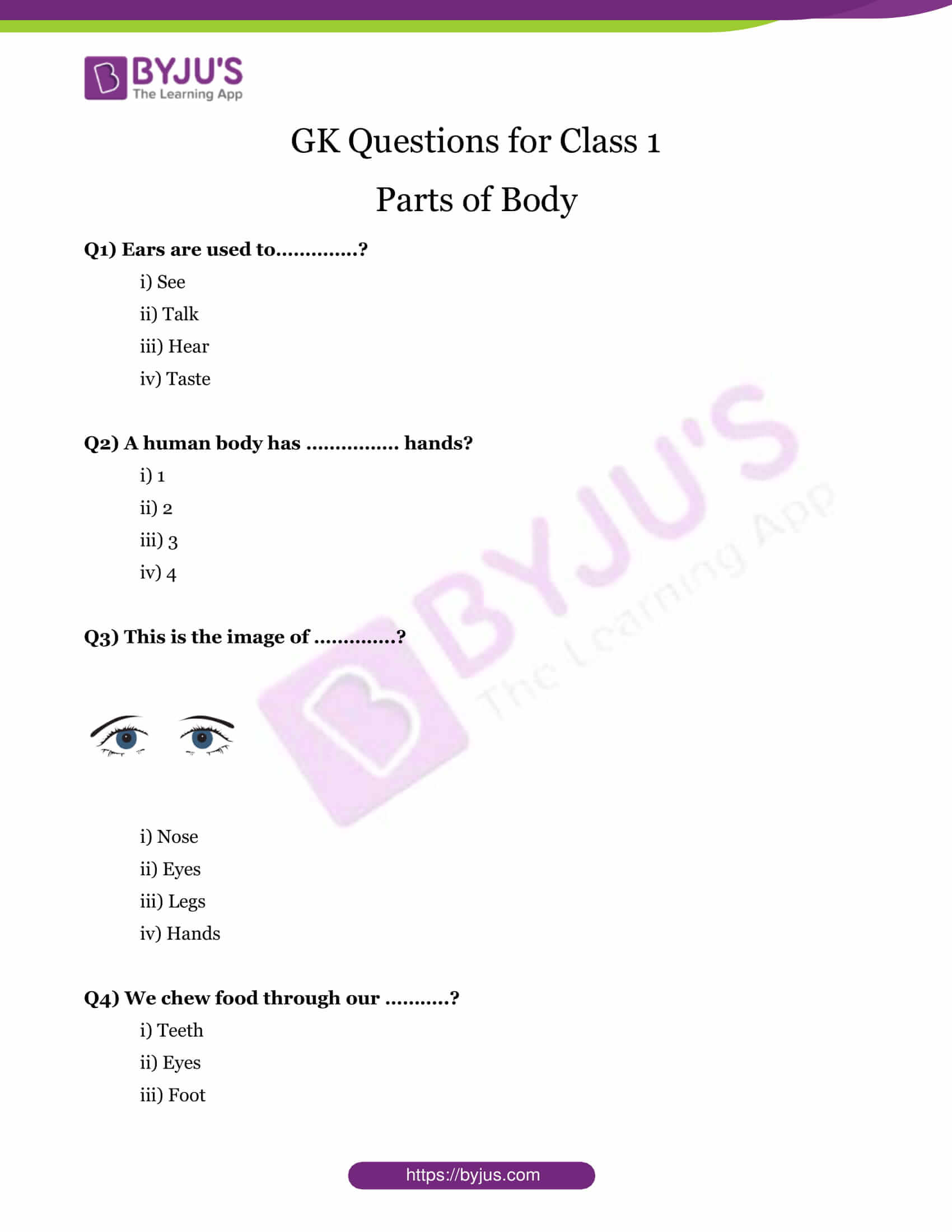
Q1) Ears are used to…………..?
Q2) A human body has ……………. hands?
Q3) This is the image of …………..?

Q4) We chew food through our ………..?
Q5) Our both hands have ………….fingers?
Q6) We smell food with ……………..?
Q7) A human body has ……………. legs?
Q8) We use our neck to move …………?
Q9) We taste our food with……….?
Q10) A human body has ………….. Eyebrows?
Q11) We walk with our ……………?
Q12) The colour of our hair is …………?
Q13) Identify the image.

Q14) We have …………… nose?
Q15) We see objects with our ……………….?
Keep learning! Download Disney BYJU’S Early Learn App for Class 1 to 3. Get interactive videos and solve questions in a fun-loving way.
More GK Questions For Class 1:
Search gk questions by class:.
EXCELLENT MATERIAL
- Share Share
Register with BYJU'S & Download Free PDFs
Register with byju's & watch live videos.

Essay on Our Body

Our body is a wonderful creation of God. Nature has assigned different tasks to different body parts. We chew with our teeth, see with our eyes, hear with our ears, feel with our skin, walk with our legs and so on.
All the body parts and organs work in coordination with each other. If we neglect any body part, then the whole body suffers.
Inside our body, there are many systems. We have a digestive system which helps us to digest all the food we eat to give us the energy to work. Our heart beats all day and all night. It beats faster when we run or walk fast. We can feel our heartbeat if we place our hand on the chest. We have a pair of kidneys. They are as important as the heart. They help to clean the blood in our body. We also have a pair of lungs which help us to breathe. We have a brain inside the head which controls all the other organs of the body.
We must take proper and good care of our body since a healthy mind can reside only in a healthy body.
More Educational Resources
Explore similar educational resources that improve a variety of skills and cultivate a love for learning.

Water is our life blood.

My Favourite Leader

I am Happy Affirmation Wall Art
Have an account?

My body parts EVS Class 1
6 questions

Introducing new Paper mode
No student devices needed. Know more
How many sense organs do we have?
We hear with our ______
We smell with the help of _________
Skin is a sense organ.
Tongue help is to_____
Skin helps us to
Explore all questions with a free account

Continue with email
Continue with phone
- Departments and Units
- Majors and Minors
- LSA Course Guide
- LSA Gateway

Search: {{$root.lsaSearchQuery.q}}, Page {{$root.page}}
- Accessibility
- Undergraduates
- Instructors
- Alums & Friends

- ★ Writing Support
- Minor in Writing
- First-Year Writing Requirement
- Transfer Students
- Writing Guides
- Peer Writing Consultant Program
- Upper-Level Writing Requirement
- Writing Prizes
- International Students
- ★ The Writing Workshop
- Dissertation ECoach
- Fellows Seminar
- Dissertation Writing Groups
- Rackham / Sweetland Workshops
- Dissertation Writing Institute
- Guides to Teaching Writing
- Teaching Support and Services
- Support for FYWR Courses
- Support for ULWR Courses
- Writing Prize Nominating
- Alums Gallery
- Commencement
- Giving Opportunities
- How Do I Write an Intro, Conclusion, & Body Paragraph?
- How Do I Make Sure I Understand an Assignment?
- How Do I Decide What I Should Argue?
- How Can I Create Stronger Analysis?
- How Do I Effectively Integrate Textual Evidence?
- How Do I Write a Great Title?
- What Exactly is an Abstract?
- How Do I Present Findings From My Experiment in a Report?
- What is a Run-on Sentence & How Do I Fix It?
- How Do I Check the Structure of My Argument?
- How Do I Incorporate Quotes?
- How Can I Create a More Successful Powerpoint?
- How Can I Create a Strong Thesis?
- How Can I Write More Descriptively?
- How Do I Incorporate a Counterargument?
- How Do I Check My Citations?
See the bottom of the main Writing Guides page for licensing information.
Traditional Academic Essays In Three Parts
Part i: the introduction.
An introduction is usually the first paragraph of your academic essay. If you’re writing a long essay, you might need 2 or 3 paragraphs to introduce your topic to your reader. A good introduction does 2 things:
- Gets the reader’s attention. You can get a reader’s attention by telling a story, providing a statistic, pointing out something strange or interesting, providing and discussing an interesting quote, etc. Be interesting and find some original angle via which to engage others in your topic.
- Provides a specific and debatable thesis statement. The thesis statement is usually just one sentence long, but it might be longer—even a whole paragraph—if the essay you’re writing is long. A good thesis statement makes a debatable point, meaning a point someone might disagree with and argue against. It also serves as a roadmap for what you argue in your paper.
Part II: The Body Paragraphs
Body paragraphs help you prove your thesis and move you along a compelling trajectory from your introduction to your conclusion. If your thesis is a simple one, you might not need a lot of body paragraphs to prove it. If it’s more complicated, you’ll need more body paragraphs. An easy way to remember the parts of a body paragraph is to think of them as the MEAT of your essay:
Main Idea. The part of a topic sentence that states the main idea of the body paragraph. All of the sentences in the paragraph connect to it. Keep in mind that main ideas are…
- like labels. They appear in the first sentence of the paragraph and tell your reader what’s inside the paragraph.
- arguable. They’re not statements of fact; they’re debatable points that you prove with evidence.
- focused. Make a specific point in each paragraph and then prove that point.
Evidence. The parts of a paragraph that prove the main idea. You might include different types of evidence in different sentences. Keep in mind that different disciplines have different ideas about what counts as evidence and they adhere to different citation styles. Examples of evidence include…
- quotations and/or paraphrases from sources.
- facts , e.g. statistics or findings from studies you’ve conducted.
- narratives and/or descriptions , e.g. of your own experiences.
Analysis. The parts of a paragraph that explain the evidence. Make sure you tie the evidence you provide back to the paragraph’s main idea. In other words, discuss the evidence.
Transition. The part of a paragraph that helps you move fluidly from the last paragraph. Transitions appear in topic sentences along with main ideas, and they look both backward and forward in order to help you connect your ideas for your reader. Don’t end paragraphs with transitions; start with them.
Keep in mind that MEAT does not occur in that order. The “ T ransition” and the “ M ain Idea” often combine to form the first sentence—the topic sentence—and then paragraphs contain multiple sentences of evidence and analysis. For example, a paragraph might look like this: TM. E. E. A. E. E. A. A.
Part III: The Conclusion
A conclusion is the last paragraph of your essay, or, if you’re writing a really long essay, you might need 2 or 3 paragraphs to conclude. A conclusion typically does one of two things—or, of course, it can do both:
- Summarizes the argument. Some instructors expect you not to say anything new in your conclusion. They just want you to restate your main points. Especially if you’ve made a long and complicated argument, it’s useful to restate your main points for your reader by the time you’ve gotten to your conclusion. If you opt to do so, keep in mind that you should use different language than you used in your introduction and your body paragraphs. The introduction and conclusion shouldn’t be the same.
- For example, your argument might be significant to studies of a certain time period .
- Alternately, it might be significant to a certain geographical region .
- Alternately still, it might influence how your readers think about the future . You might even opt to speculate about the future and/or call your readers to action in your conclusion.
Handout by Dr. Liliana Naydan. Do not reproduce without permission.

- Information For
- Prospective Students
- Current Students
- Faculty and Staff
- Alumni and Friends
- More about LSA
- How Do I Apply?
- LSA Magazine
- Student Resources
- Academic Advising
- Global Studies
- LSA Opportunity Hub
- Social Media
- Update Contact Info
- Privacy Statement
- Report Feedback

- school Campus Bookshelves
- menu_book Bookshelves
- perm_media Learning Objects
- login Login
- how_to_reg Request Instructor Account
- hub Instructor Commons
- Download Page (PDF)
- Download Full Book (PDF)
- Periodic Table
- Physics Constants
- Scientific Calculator
- Reference & Cite
- Tools expand_more
- Readability
selected template will load here
This action is not available.

3.3: Body Paragraphs
- Last updated
- Save as PDF
- Page ID 165697

- Ann Inoshita, Karyl Garland, Kate Sims, Jeanne K. Tsutsui Keuma, and Tasha Williams
- University of Hawaii via University of Hawaiʻi OER
If the thesis is the roadmap for the essay, then body paragraphs should closely follow that map. The reader should be able to predict what follows an introductory paragraph by simply reading the thesis statement. The body paragraphs present the evidence the reader has gathered to support the overall thesis. Before writers begin to support the thesis within the body paragraphs, they should find information from a variety of sources that support the topic.
Select Primary Support for the Thesis
Without primary support, the argument is not likely to be convincing. Primary support can be described as the major points writers choose to expand on the thesis. It is the most important information they select to argue their chosen points of view. Each point they choose will be incorporated into the topic sentence for each body paragraph they write. The primary foundational points are further supported by evidentiary details within the paragraphs.
Identify the Characteristics of Good Primary Support
In order to fulfill the requirements of good primary support, the information writers choose must meet the following standards:
Be Specific
The main points they make about the thesis and the examples they use to expand on those points need to be specific. Writers use specific examples to provide the evidence and to build upon the general ideas. These types of examples give the reader something narrow to focus on, and, if used properly, they leave little doubt about their claim. General examples, while they convey the necessary information, are not nearly as compelling or useful in writing because they are too obvious and typical.
Be Relevant to the Thesis
Primary support is considered strong when it relates directly to the thesis. Primary support should show, explain, or prove their main argument without delving into irrelevant details. When faced with a great deal of information that could be used to prove the thesis, writers may think all the information should be included in the body paragraphs. However, effective writers resist the temptation to lose focus. Good writers choose examples wisely by making sure they directly connect to the thesis.
Add Details
The thesis, while specific, should not be very detailed. Discussion develops in the body paragraphs. Using detailed support shows readers that the writer has considered all the facts and chosen only the most precise details to enhance the point of view.
Prewrite to Identify Primary Supporting Points for a Thesis Statement
When writers brainstorm on a topic, they essentially make a list of examples or reasons they support the stance. Stemming from each point, the writer should provide details to support those reasons. After prewriting, the writer is then able to look back at the information and choose the most compelling pieces to use in writing body paragraphs.
Select the Most Effective Primary Supporting Points for a Thesis Statement
After writers have engaged in prewriting to formulate working thesis statements, they may have generated a large amount of information, which may be edited later. It is helpful to remember that primary support must be relevant to the thesis. Focusing on the main argument, any ideas that do not directly relate to it can be deleted. Omitting unrelated ideas ensures that writers will use only the most convincing information in their body paragraphs. For many first-year writing assignments, students would do well to choose at least three of the most compelling points. These will serve as the content for the topic sentences that will usually begin each of the body paragraphs.
Body Paragraph Structure
One wat to think about a body paragraph is that it, essentially, consists of three main parts: the main point or topic sentence, information and evidence that supports the main point, and an example of how the information gives foundation to the main point and the essay’s overall thesis. The three parts of a paragraph can be referred to as the following:
I = Information
E = Explanation
An Example of Abbreviated Version of P.I.E.
As a pedestrian in Hawai‘i, it is important to be aware of one’s surroundings. In 2018, 43 pedestrians died in car accidents (Gordon 3). Hawai‘i’s roadways can be dangerous, and being vigilant is necessary in order to increase pedestrian safety.
Point: As a pedestrian in Hawai‘i, it is important to be aware of your surroundings.
Information: In 2018, 43 pedestrians died in car accident.
Explanation: Hawai‘i’s roadways can be dangerous, and being vigilant is necessary to increase pedestrian safety.
Use Transitions
Transitional words and phrases help to organize an essay and improve clarity for the reader. Some examples of transitions can be found at “ Transitional Devices ,” The Purdue Purdue Online Writing Lab (OWL).
- Write a paragraph that contains a main point, follow-up and substantial information, and an explanation about how that information relates to the main point of the paragraph or to the overall thesis of the essay. The topic of your paragraph is up to you. What topic would you like to write about?
P: What is the main point of your paragraph?
I: What information backs up your point?
E: Explain how this information proves that your main point is correct.
Combine these three parts to form a paragraph.
Further Resources
Ashford University Writing Center: “ Essay Development: Good paragraph development: as easy as P.I.E. ” Writing resources .
Works Cited
“ 43 pedestrians died on Hawaii roadways in 2018. That’s more than the number killed in vehicles. ” HawaiiNewsNow , 3 January 2019.
Parts of this section are adapted from OER material from “ Writing Body Paragraphs “ in Writing for Success v. 1.0 (2012). Writing for Success was adapted by Saylor Academy under a Creative Commons Attribution-NonCommercial-ShareAlike 3.0 License without attribution as requested by the work’s original creator or licensor.
- I nfographics
- Show AWL words
- Subscribe to newsletter
- What is academic writing?
- Academic Style
- What is the writing process?
- Understanding the title
- Brainstorming
- Researching
- First draft
- Proofreading
- Report writing
- Compare & contrast
- Cause & effect
- Problem-solution
- Classification
- Essay structure
- Introduction
- Literature review
- Book review
- Research proposal
- Thesis/dissertation
- What is cohesion?
- Cohesion vs coherence
- Transition signals
- What are references?
- In-text citations
- Reference sections
- Reporting verbs
- Band descriptors
Show AWL words on this page.
Levels 1-5: grey Levels 6-10: orange
Show sorted lists of these words.
Any words you don't know? Look them up in the website's built-in dictionary .
Choose a dictionary . Wordnet OPTED both
Main body How to write a good essay paragraph
As the name suggests, the main body is the main part of your essay. It is a collection of paragraphs related to your topic, and in order to understand how to write a good main body, you need to understand how to write good paragraphs. This section will help you understand the three main structural components of any good paragraph: the topic sentence , supporting sentences , and the concluding sentence . An example essay has been given to help you understand all of these, and there is a checklist at the end which you can use for editing your main body.
The topic sentence
The topic sentence is the most important sentence in a paragraph. It is usually the first sentence, though may sometimes also be placed at the end. It indicates what the paragraph is going to discuss, and thus serves as a useful guide both for the writer and the reader; the writer can have a clear idea what information to include (and what information to exclude), while the reader will have a clear idea of what the paragraph will discuss, which will aid in understanding.
The topic sentence comprises two separate parts: the topic of the paragraph, and the controlling idea, which limits the topic to one or two areas that can be discussed fully in one paragraph.
Consider the following topic sentence (from the example essay below):
The most striking advantage of the car is its convenience .
The topic of this short essay is the advantages and disadvantages of cars, as a result of which each paragraph has either the advantages or the disadvantages of cars as its topic. In this case, the topic is the advantage of cars . The controlling idea is convenience , which limits the discussion of advantages of cars to this one idea. This paragraph will therefore give supporting ideas (reasons, facts, etc.) to show why convenience is an advantage of cars.
Here is another topic sentence from the same example essay :
Despite this advantage, cars have many significant disadvantages , the most important of which is the pollution they cause.
The topic of this paragraph is the disadvantage of cars . The controlling idea is pollution . This paragraph will therefore give supporting ideas (reasons, facts, etc.) to show why pollution is a disadvantage of cars.
Here is the final topic sentence from the same example essay :
A further disadvantage is the traffic problems that they cause in many cities and towns of the world.
The topic of this paragraph is again the disadvantage of cars . The controlling idea this time is traffic problems . This paragraph will therefore give supporting ideas (reasons, facts, etc.) to show why traffic congestion is a disadvantage of cars.
The following are key points to remember about the topic sentence:
- it should be a complete sentence
- it should contain both a topic and a controlling idea
- it is the most general statement in the paragraph, because it gives only the main idea with any supporting details
Supporting sentences
Supporting sentences develop the topic sentence. They are more specific than the topic sentence, giving reasons, examples, facts, statistics, and citations in support of the main idea of the paragraph.
Below is the whole paragraph for the second topic sentence above. The supporting sentences are in bold.
Despite this advantage, cars have many significant disadvantages, the most important of which is the pollution they cause. Almost all cars run either on petrol or diesel fuel, both of which are fossil fuels. Burning these fuels causes the car to emit serious pollutants, such as carbon dioxide, carbon monoxide, and nitrous oxide. Not only are these gases harmful for health, causing respiratory disease and other illnesses, they also contribute to global warming, an increasing problem in the modern world. According to the Union of Concerned Scientists (2013), transportation in the US accounts for 30% of all carbon dioxide production in that country, with 60% of these emissions coming from cars and small trucks. In short, pollution is a major drawback of cars.
The paragraph above has the following support:
- burning fuels (petrol and diesel) in car engines emits pollutants - fact
- cars emit carbon dioxide, carbon monoxide, nitrous oxide - examples (of pollutants)
- the pollutants are harmful for health - fact
- the pollutants cause respiratory disease - example (of how they harm our health)
- the pollutants contribute to global warming - fact
- 30% of carbon dioxide in the US comes from transport - statistic
- 60% of the these emissions come from cars and small trucks - statistic
- this information comes from Union of Concerned Scientists (2013) - citation
The concluding sentence
The concluding sentence is an optional component of a paragraph. In other words, it is not absolutely necessary. It most useful for especially long paragraphs, as it will help the reader to remember of the main ideas of the paragraph.
Below is the concluding sentence from the paragraph above:
In short, the harm to our health and to the environment means that pollution from cars is a major drawback.
Here the concluding sentence not only repeats the controlling idea of the topic sentence , that cars cause pollution, but also summarises the information of the paragraph, which is that the pollution from cars is harmful to both our health and the environment.
The following are useful transition signals to use for the concluding sentence:
- In conclusion...
- In summary...
- In brief...
- Therefore...
- In short...
- These examples show that...
- This evidence strongly suggests that...
Example essay
Below is a discussion essay which looks at the advantages and disadvantages of car ownership. This essay is used throughout the essay writing section to help you understand different aspects of essay writing. Here it focuses on topic sentences and controlling ideas (mentioned on this page), the thesis statement and general statements of the introduction, and the summary and final comment of the conclusion. Click on the different areas (in the shaded boxes to the right) to highlight the different structural aspects in this essay.
Although they were invented almost a hundred years ago, for decades cars were only owned by the rich. Since the 60s and 70s they have become increasingly affordable, and now most families in developed nations, and a growing number in developing countries, own a car. While cars have undoubted advantages , of which their convenience is the most apparent, they have significant drawbacks , most notably pollution and traffic problems . The most striking advantage of the car is its convenience. When travelling long distance, there may be only one choice of bus or train per day, which may be at an unsuitable time. The car, however, allows people to travel at any time they wish, and to almost any destination they choose. Despite this advantage, cars have many significant disadvantages , the most important of which is the pollution they cause. Almost all cars run either on petrol or diesel fuel, both of which are fossil fuels. Burning these fuels causes the car to emit serious pollutants, such as carbon dioxide, carbon monoxide, and nitrous oxide. Not only are these gases harmful for health, causing respiratory disease and other illnesses, they also contribute to global warming, an increasing problem in the modern world. According to the Union of Concerned Scientists (2013), transportation in the US accounts for 30% of all carbon dioxide production in that country, with 60% of these emissions coming from cars and small trucks. In short, pollution is a major drawback of cars. A further disadvantage is the traffic problems that they cause in many cities and towns of the world. While car ownership is increasing in almost all countries of the world, especially in developing countries, the amount of available roadway in cities is not increasing at an equal pace. This can lead to traffic congestion, in particular during the morning and evening rush hour. In some cities, this congestion can be severe, and delays of several hours can be a common occurrence. Such congestion can also affect those people who travel out of cities at the weekend. Spending hours sitting in an idle car means that this form of transport can in fact be less convenient than trains or aeroplanes or other forms of public transport. In conclusion, while the car is advantageous for its convenience , it has some important disadvantages , in particular the pollution it causes and the rise of traffic jams . If countries can invest in the development of technology for green fuels, and if car owners can think of alternatives such as car sharing, then some of these problems can be lessened. References
Union of Concerned Scientists (2013). Car Emissions and Global Warming. www.ucsusa.org/clean vehicles/why-clean-cars/global-warming/ (Access date: 8 August, 2013)

GET FREE EBOOK
Like the website? Try the books. Enter your email to receive a free sample from Academic Writing Genres .
Below is a checklist for the main body of an essay. Use it to check your own writing, or get a peer (another student) to help you.
Next section
Find out how to structure the conclusion of an essay in the next section.
Previous section
Go back to the previous section about the essay introduction .

Author: Sheldon Smith ‖ Last modified: 26 January 2022.
Sheldon Smith is the founder and editor of EAPFoundation.com. He has been teaching English for Academic Purposes since 2004. Find out more about him in the about section and connect with him on Twitter , Facebook and LinkedIn .
Compare & contrast essays examine the similarities of two or more objects, and the differences.
Cause & effect essays consider the reasons (or causes) for something, then discuss the results (or effects).
Discussion essays require you to examine both sides of a situation and to conclude by saying which side you favour.
Problem-solution essays are a sub-type of SPSE essays (Situation, Problem, Solution, Evaluation).
Transition signals are useful in achieving good cohesion and coherence in your writing.
Reporting verbs are used to link your in-text citations to the information cited.
Are you seeking one-on-one college counseling and/or essay support? Limited spots are now available. Click here to learn more.
How to Write a Body Paragraph for a College Essay
January 29, 2024

No matter the discipline, college success requires mastering several academic basics, including the body paragraph. This article will provide tips on drafting and editing a strong body paragraph before examining several body paragraph examples. Before we look at how to start a body paragraph and how to write a body paragraph for a college essay (or other writing assignment), let’s define what exactly a body paragraph is.
What is a Body Paragraph?
Simply put, a body paragraph consists of everything in an academic essay that does not constitute the introduction and conclusion. It makes up everything in between. In a five-paragraph, thesis-style essay (which most high schoolers encounter before heading off to college), there are three body paragraphs. Longer essays with more complex arguments will include many more body paragraphs.
We might correlate body paragraphs with bodily appendages—say, a leg. Both operate in a somewhat isolated way to perform specific operations, yet are integral to creating a cohesive, functioning whole. A leg helps the body sit, walk, and run. Like legs, body paragraphs work to move an essay along, by leading the reader through several convincing ideas. Together, these ideas, sometimes called topics, or points, work to prove an overall argument, called the essay’s thesis.
If you compared an essay on Kant’s theory of beauty to an essay on migratory birds, you’d notice that the body paragraphs differ drastically. However, on closer inspection, you’d probably find that they included many of the same key components. Most body paragraphs will include specific, detailed evidence, an analysis of the evidence, a conclusion drawn by the author, and several tie-ins to the larger ideas at play. They’ll also include transitions and citations leading the reader to source material. We’ll go into more detail on these components soon. First, let’s see if you’ve organized your essay so that you’ll know how to start a body paragraph.
How to Start a Body Paragraph
It can be tempting to start writing your college essay as soon as you sit down at your desk. The sooner begun, the sooner done, right? I’d recommend resisting that itch. Instead, pull up a blank document on your screen and make an outline. There are numerous reasons to make an outline, and most involve helping you stay on track. This is especially true of longer college papers, like the 60+ page dissertation some seniors are required to write. Even with regular writing assignments with a page count between 4-10, an outline will help you visualize your argumentation strategy. Moreover, it will help you order your key points and their relevant evidence from most to least convincing. This in turn will determine the order of your body paragraphs.
The most convincing sequence of body paragraphs will depend entirely on your paper’s subject. Let’s say you’re writing about Penelope’s success in outwitting male counterparts in The Odyssey . You may want to begin with Penelope’s weaving, the most obvious way in which Penelope dupes her suitors. You can end with Penelope’s ingenious way of outsmarting her own husband. Because this evidence is more ambiguous it will require a more nuanced analysis. Thus, it’ll work best as your final body paragraph, after readers have already been convinced of more digestible evidence. If in doubt, keep your body paragraph order chronological.
It can be worthwhile to consider your topic from multiple perspectives. You may decide to include a body paragraph that sets out to consider and refute an opposing point to your thesis. This type of body paragraph will often appear near the end of the essay. It works to erase any lingering doubts readers may have had, and requires strong rhetorical techniques.
How to Start a Body Paragraph, Continued
Once you’ve determined which key points will best support your argument and in what order, draft an introduction. This is a crucial step towards writing a body paragraph. First, it will set the tone for the rest of your paper. Second, it will require you to articulate your thesis statement in specific, concise wording. Highlight or bold your thesis statement, so you can refer back to it quickly. You should be looking at your thesis throughout the drafting of your body paragraphs.
Finally, make sure that your introduction indicates which key points you’ll be covering in your body paragraphs, and in what order. While this level of organization might seem like overkill, it will indicate to the reader that your entire paper is minutely thought-out. It will boost your reader’s confidence going in. They’ll feel reassured and open to your thought process if they can see that it follows a clear path.
Now that you have an essay outline and introduction, you’re ready to draft your body paragraphs.
How to Draft a Body Paragraph
At this point, you know your body paragraph topic, the key point you’re trying to make, and you’ve gathered your evidence. The next thing to do is write! The words highlighted in bold below comprise the main components that will make up your body paragraph. (You’ll notice in the body paragraph examples below that the order of these components is flexible.)
Start with a topic sentence . This will indicate the main point you plan to make that will work to support your overall thesis. Your topic sentence also alerts the reader to the change in topic from the last paragraph to the current one. In making this new topic known, you’ll want to create a transition from the last topic to this one.
Transitions appear in nearly every paragraph of a college essay, apart from the introduction. They create a link between disparate ideas. (For example, if your transition comes at the end of paragraph 4, you won’t need a second transition at the beginning of paragraph 5.) The University of Wisconsin-Madison’s Writing Center has a page devoted to Developing Strategic Transitions . Likewise, the University of North Carolina at Chapel Hill’s Writing Center offers help on paragraph transitions .
How to Draft a Body Paragraph for a College Essay ( Continued)
With the topic sentence written, you’ll need to prove your point through tangible evidence. This requires several sentences with various components. You’ll want to provide more context , going into greater detail to situate the reader within the topic. Next, you’ll provide evidence , often in the form of a quote, facts, or data, and supply a source citation . Citing your source is paramount. Sources indicate that your evidence is empirical and objective. It implies that your evidence is knowledge shared by others in the academic community. Sometimes you’ll want to provide multiple pieces of evidence, if the evidence is similar and can be grouped together.
After providing evidence, you must provide an interpretation and analysis of this evidence. In other words, use rhetorical techniques to paraphrase what your evidence seems to suggest. Break down the evidence further and explain and summarize it in new words. Don’t simply skip to your conclusion. Your evidence should never stand for itself. Why? Because your interpretation and analysis allow you to exhibit original, analytical, and critical thinking skills.
Depending on what evidence you’re using, you may repeat some of these components in the same body paragraph. This might look like: more context + further evidence + increased interpretation and analysis . All this will add up to proving and reaffirming your body paragraph’s main point . To do so, conclude your body paragraph by reformulating your thesis statement in light of the information you’ve given. I recommend comparing your original thesis statement to your paragraph’s concluding statement. Do they align? Does your body paragraph create a sound connection to the overall academic argument? If not, you’ll need to fix this issue when you edit your body paragraph.
How to Edit a Body Paragraph
As you go over each body paragraph of your college essay, keep this short checklist in mind.
- Consistency in your argument: If your key points don’t add up to a cogent argument, you’ll need to identify where the inconsistency lies. Often it lies in interpretation and analysis. You may need to improve the way you articulate this component. Try to think like a lawyer: how can you use this evidence to your advantage? If that doesn’t work, you may need to find new evidence. As a last resort, amend your thesis statement.
- Language-level persuasion. Use a broad vocabulary. Vary your sentence structure. Don’t repeat the same words too often, which can induce mental fatigue in the reader. I suggest keeping an online dictionary open on your browser. I find Merriam-Webster user-friendly, since it allows you to toggle between definitions and synonyms. It also includes up-to-date example sentences. Also, don’t forget the power of rhetorical devices .
- Does your writing flow naturally from one idea to the next, or are there jarring breaks? The editing stage is a great place to polish transitions and reinforce the structure as a whole.
Our first body paragraph example comes from the College Transitions article “ How to Write the AP Lang Argument Essay .” Here’s the prompt: Write an essay that argues your position on the value of striving for perfection.
Here’s the example thesis statement, taken from the introduction paragraph: “Striving for perfection can only lead us to shortchange ourselves. Instead, we should value learning, growth, and creativity and not worry whether we are first or fifth best.” Now let’s see how this writer builds an argument against perfection through one main point across two body paragraphs. (While this writer has split this idea into two paragraphs, one to address a problem and one to provide an alternative resolution, it could easily be combined into one paragraph.)
“Students often feel the need to be perfect in their classes, and this can cause students to struggle or stop making an effort in class. In elementary and middle school, for example, I was very nervous about public speaking. When I had to give a speech, my voice would shake, and I would turn very red. My teachers always told me “relax!” and I got Bs on Cs on my speeches. As a result, I put more pressure on myself to do well, spending extra time making my speeches perfect and rehearsing late at night at home. But this pressure only made me more nervous, and I started getting stomach aches before speaking in public.
“Once I got to high school, however, I started doing YouTube make-up tutorials with a friend. We made videos just for fun, and laughed when we made mistakes or said something silly. Only then, when I wasn’t striving to be perfect, did I get more comfortable with public speaking.”
Body Paragraph Example 1 Dissected
In this body paragraph example, the writer uses their personal experience as evidence against the value of striving for perfection. The writer sets up this example with a topic sentence that acts as a transition from the introduction. They also situate the reader in the classroom. The evidence takes the form of emotion and physical reactions to the pressure of public speaking (nervousness, shaking voice, blushing). Evidence also takes the form of poor results (mediocre grades). Rather than interpret the evidence from an analytical perspective, the writer produces more evidence to underline their point. (This method works fine for a narrative-style essay.) It’s clear that working harder to be perfect further increased the student’s nausea.
The writer proves their point in the second paragraph, through a counter-example. The main point is that improvement comes more naturally when the pressure is lifted; when amusement is possible and mistakes aren’t something to fear. This point ties back in with the thesis, that “we should value learning, growth, and creativity” over perfection.
This second body paragraph example comes from the College Transitions article “ How to Write the AP Lang Rhetorical Analysis Essay .” Here’s an abridged version of the prompt: Rosa Parks was an African American civil rights activist who was arrested in 1955 for refusing to give up her seat on a segregated bus in Montgomery, Alabama. Read the passage carefully. Write an essay that analyzes the rhetorical choices Obama makes to convey his message.
Here’s the example thesis statement, taken from the introduction paragraph: “Through the use of diction that portrays Parks as quiet and demure, long lists that emphasize the extent of her impacts, and Biblical references, Obama suggests that all of us are capable of achieving greater good, just as Parks did.” Now read the body paragraph example, below.
“To further illustrate Parks’ impact, Obama incorporates Biblical references that emphasize the importance of “that single moment on the bus” (lines 57-58). In lines 33-35, Obama explains that Parks and the other protestors are “driven by a solemn determination to affirm their God-given dignity” and he also compares their victory to the fall the “ancient walls of Jericho” (line 43). By including these Biblical references, Obama suggests that Parks’ action on the bus did more than correct personal or political wrongs; it also corrected moral and spiritual wrongs. Although Parks had no political power or fortune, she was able to restore a moral balance in our world.”
Body Paragraph Example 2 Dissected
The first sentence in this body paragraph example indicates that the topic is transitioning into biblical references as a means of motivating ordinary citizens. The evidence comes as quotes taken from Obama’s speech. One is a reference to God, and the other an allusion to a story from the bible. The subsequent interpretation and analysis demonstrate that Obama’s biblical references imply a deeper, moral and spiritual significance. The concluding sentence draws together the morality inherent in equal rights with Rosa Parks’ power to spark change. Through the words “no political power or fortune,” and “moral balance,” the writer ties the point proven in this body paragraph back to the thesis statement. Obama promises that “All of us” (no matter how small our influence) “are capable of achieving greater good”—a greater moral good.
What’s Next?
Before you body paragraphs come the start and, after your body paragraphs, the conclusion, of course! If you’ve found this article helpful, be sure to read up on how to start a college essay and how to end a college essay .
You may also find the following blogs to be of interest:
- 6 Best Common App Essay Examples
- How to Write the Overcoming Challenges Essay
- UC Essay Examples
- How to Write the Community Essay
- How to Write the Why this Major? Essay
- College Essay

Kaylen Baker
With a BA in Literary Studies from Middlebury College, an MFA in Fiction from Columbia University, and a Master’s in Translation from Université Paris 8 Vincennes-Saint-Denis, Kaylen has been working with students on their writing for over five years. Previously, Kaylen taught a fiction course for high school students as part of Columbia Artists/Teachers, and served as an English Language Assistant for the French National Department of Education. Kaylen is an experienced writer/translator whose work has been featured in Los Angeles Review, Hybrid, San Francisco Bay Guardian, France Today, and Honolulu Weekly, among others.
- 2-Year Colleges
- Application Strategies
- Best Colleges by Major
- Best Colleges by State
- Big Picture
- Career & Personality Assessment
- College Search/Knowledge
- College Success
- Costs & Financial Aid
- Dental School Admissions
- Extracurricular Activities
- Graduate School Admissions
- High School Success
- High Schools
- Law School Admissions
- Medical School Admissions
- Navigating the Admissions Process
- Online Learning
- Private High School Spotlight
- Summer Program Spotlight
- Summer Programs
- Test Prep Provider Spotlight

“Innovative and invaluable…use this book as your college lifeline.”
— Lynn O'Shaughnessy
Nationally Recognized College Expert
College Planning in Your Inbox
Join our information-packed monthly newsletter.
I am a... Student Student Parent Counselor Educator Other First Name Last Name Email Address Zip Code Area of Interest Business Computer Science Engineering Fine/Performing Arts Humanities Mathematics STEM Pre-Med Psychology Social Studies/Sciences Submit
Purdue Online Writing Lab Purdue OWL® College of Liberal Arts
Welcome to the Purdue Online Writing Lab

Welcome to the Purdue OWL
This page is brought to you by the OWL at Purdue University. When printing this page, you must include the entire legal notice.
Copyright ©1995-2018 by The Writing Lab & The OWL at Purdue and Purdue University. All rights reserved. This material may not be published, reproduced, broadcast, rewritten, or redistributed without permission. Use of this site constitutes acceptance of our terms and conditions of fair use.
The Online Writing Lab at Purdue University houses writing resources and instructional material, and we provide these as a free service of the Writing Lab at Purdue. Students, members of the community, and users worldwide will find information to assist with many writing projects. Teachers and trainers may use this material for in-class and out-of-class instruction.
The Purdue On-Campus Writing Lab and Purdue Online Writing Lab assist clients in their development as writers—no matter what their skill level—with on-campus consultations, online participation, and community engagement. The Purdue Writing Lab serves the Purdue, West Lafayette, campus and coordinates with local literacy initiatives. The Purdue OWL offers global support through online reference materials and services.
A Message From the Assistant Director of Content Development
The Purdue OWL® is committed to supporting students, instructors, and writers by offering a wide range of resources that are developed and revised with them in mind. To do this, the OWL team is always exploring possibilties for a better design, allowing accessibility and user experience to guide our process. As the OWL undergoes some changes, we welcome your feedback and suggestions by email at any time.
Please don't hesitate to contact us via our contact page if you have any questions or comments.
All the best,
Social Media
Facebook twitter.

IMAGES
VIDEO
COMMENTS
The human body looks very simple from the outside with hands, legs, face, eyes, ears and so on. But, there is a more complex and significant structure inside the body that helps us to live. The human body is made up of many small structures like cells, tissues, organs and systems. It is covered by the skin, beneath which you could find muscles ...
24. (a) 20. 25. (d) 32. The human body comprises different parts - the head, the trunk, and our upper and lower limbs. It is important to care for the human body by eating well and exercising to stay healthy. We hope the quiz will serve as an interesting way for your child to learn about the different parts of the human body.
The My Body EVS Class 1 worksheet is an excellent tool for reinforcing the learning process. The body parts name for Class 1 and Class 2 are designed to help young learners identify and name the different parts of their bodies. With the worksheet on my body for Class 2, students can further enhance their knowledge of the human body.
Independent Practice. Have the students work in groups to create a picture book about the body. Have each group create a story about the different body parts and how they are used. Have each group use the body part drawings and the words they have learned to create the illustrations for their book. Have each group present their book to the class.
1 The Anatomy of a Body Paragraph When you write strong, clear paragraphs, you are guiding your readers through your argument by showing them how your points fit together to support your thesis. The number of paragraphs in your essay should be determined by the number of steps you need to take to build your argument.
The body is always divided into paragraphs. You can work through the body in three main stages: Create an outline of what you want to say and in what order. Write a first draft to get your main ideas down on paper. Write a second draft to clarify your arguments and make sure everything fits together. This article gives you some practical tips ...
The basic structure of an essay always consists of an introduction, a body, and a conclusion. But for many students, the most difficult part of structuring an essay is deciding how to organize information within the body. This article provides useful templates and tips to help you outline your essay, make decisions about your structure, and ...
The five parts of the essay are described as under: Introduction: The first part of the essay should begin with an introduction about the topic which will give an idea about the topic to your reader. First Body Part: The second part of the essay is known as the first body part which will tell your reader about the essay in detail with examples and related points which will describe your essay.
This printable worksheet covers various body parts, sense organs, and the functions they perform. Enhance your EVS learning with these interactive questions today! Get free, printable Class 1 EVS worksheets in PDF format from yourexaminfo. These worksheets, created by qualified teachers, cover major themes and help students comprehend better.
The Anatomy of a Body Paragraph . . . . . . 18-20 Transitions . . . . . . . . . 21-23 Tips for ... Even if the instructor has introduced the assignment in class, make sure to read the prompt on your own. You'd be surprised how often someone comes to the Writing ... When you write an essay for a course you are taking, you are being asked not ...
Written by MasterClass. Last updated: Jun 7, 2021 • 2 min read. From magazines to academic essays, you can find body paragraphs across many forms of writing. Learn more about how to write engaging body paragraphs that support the central idea of your writing project.
Parts of the body. My body moves. We use our legs to kick, walk, skip, run, jump etc. We can wiggle our toes and fingers, write with our hands, lift things etc. While doing these things our body parts bends. Bending makes movement possible. All the places that bend in our body are called joints.
Here we have provided GK Questions for Class 1 students based on the topic "Human body parts". They must answer these questions to know how much they have learned about the human body. To download the PDF consisting of all the GK questions on Human Body Parts, click on the link below. Download GK Questions for Class 1 - Human Body Parts
Our Body. Our body is a wonderful creation of God. Nature has assigned different tasks to different body parts. We chew with our teeth, see with our eyes, hear with our ears, feel with our skin, walk with our legs and so on. All the body parts and organs work in coordination with each other. If we neglect any body part, then the whole body suffers.
Report an issue. explore. My body parts EVS Class 1 quiz for 1st grade students. Find other quizzes for Science and more on Quizizz for free!
Part I: The Introduction. An introduction is usually the first paragraph of your academic essay. If you're writing a long essay, you might need 2 or 3 paragraphs to introduce your topic to your reader. A good introduction does 2 things: Gets the reader's attention. You can get a reader's attention by telling a story, providing a statistic ...
A good paragraph should contain at least the following four elements: T ransition, T opic sentence, specific E vidence and analysis, and a B rief wrap-up sentence (also known as a warrant) -TTEB! A T ransition sentence leading in from a previous paragraph to assure smooth reading. This acts as a hand-off from one idea to the next.
This page titled 3.3: Body Paragraphs is shared under a CC BY-NC-SA 4.0 license and was authored, remixed, and/or curated by Ann Inoshita, Karyl Garland, Kate Sims, Jeanne K. Tsutsui Keuma, and Tasha Williams ( University of Hawaiʻi OER) . If the thesis is the roadmap for the essay, then body paragraphs should closely follow that map.
As the name suggests, the main body is the main part of your essay. It is a collection of paragraphs related to your topic, and in order to understand how to write a good main body, you need to understand how to write good paragraphs. This section will help you understand the three main structural components of any good paragraph: the topic ...
Body Paragraph Example 1 Dissected. In this body paragraph example, the writer uses their personal experience as evidence against the value of striving for perfection. The writer sets up this example with a topic sentence that acts as a transition from the introduction. They also situate the reader in the classroom.
First, a strong topic sentence makes a claim or states a main idea that is then developed in the rest of the paragraph. Second, the topic sentence signals to readers how the paragraph is connected to the larger argument in your paper. Below is an example of a topic sentence from a paper by Laura Connor '23 that analyzes rhetoric used by ...
Teachers and trainers may use this material for in-class and out-of-class instruction. Mission. The Purdue On-Campus Writing Lab and Purdue Online Writing Lab assist clients in their development as writers—no matter what their skill level—with on-campus consultations, online participation, and community engagement. ...